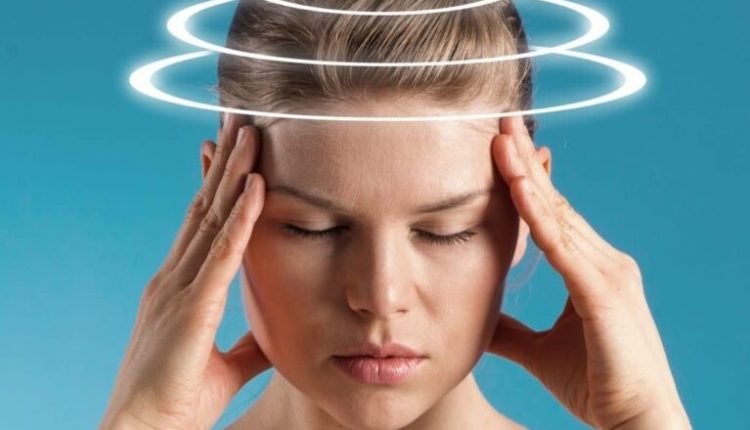
Balance dysfunction and vertiginous syndrome: let's treat them with functional vestibular rehabilitation
Vertigo syndrome and balance dysfunctions are characterised by symptoms that are difficult to explain, alterations in the body’s faculties of perception in space; to add to this, the rehabilitation therapies to treat them are often little known
However, there is a cure for these disorders and it is called functional vestibular re-education.
The symptoms of balance dysfunction and vertiginous syndrome
Balance dysfunction is characteristic of all those disorders affecting the organs responsible for stabilising the body in space and can affect
- stability;
- orientation;
- posture.
The symptomatology of balance dysfunction and vertiginous syndrome presents itself with:
- dizziness
- dizziness;
- fainting;
- nausea;
- headaches.
The main causes of this instability can be traced to:
- ear dysfunctions;
- cervical dysfunctions;
- anxiety states.
The role of the treating physician
It happens that the person suffering from one of these dysfunctions finds it difficult to express the feeling of discomfort that accompanies him or her, leading to an untimely diagnosis of the pathology and thus burdening his or her daily life.
The patient presenting this type of dysfunction is usually referred by his or her attending physician to specialists (Physiatrist, Otolaryngologist, Neurologist) who, depending on the pathology and general condition, propose in-depth studies and targeted treatment.
Physiotherapeutic treatment can be of great help in many cases.
Functional vestibular re-education in vertiginous syndrome
Functional vestibular re-education is a physiotherapeutic treatment for people who have difficulty with balance or feel dizzy and postural instability.
The important thing is the ad-hoc customisation of therapy, according to the indications of medical specialists.
Modulating exercises is the first step that can lead to the resolution of many physical problems.
The physiotherapy proposal to the patient for the treatment of balance dysfunction can be manifold and chosen by the medical specialist in collaboration with the physiotherapist:
- traditionally physiotherapeutic treatment
- manual therapy treatment;
- course of specific balance exercises.
Precisely because vertiginous syndrome and balance dysfunction are submerged pathologies, the multidisciplinary approach is the answer to successful treatment and can guarantee the achievement of faster psycho-physical well-being.
There is a vacuum of information about the treatment to be undertaken for this type of disorder; patients do not know who to turn to.
Instead, when the specialist takes charge of the patient and, after the various investigations and pharmacological treatments, refers him or her to us, a real process begins that can improve everyday life.
Vertigo syndrome: from fear to awareness with vestibular re-education
Vertigo syndrome and balance dysfunction affect the everyday life of affected patients: the fear that the event of discomfort and instability will recur is one of the most common consequences.
Vestibular treatment ensures awareness of the event. The specialised physiotherapist proposes exercises that are performed to evoke the problem and puts the patient in a position to face and overcome it.
Precisely because of the complexity of managing the patient’s physical reactions, few facilities offer this type of treatment to date.
It is essential to work in a facility that is prepared for all eventualities.
The exercises can cause dizziness or discomfort and the treatment can trigger the pathology suffered; constant medical support is therefore necessary.
The patient finds a safe haven: the patient is afraid.
In this syndrome, especially in the acute phase, the feeling of bewilderment is great.
It is not the classic pathology, it sometimes presents itself suddenly: the person is walking calmly when a strong attack of vertigo occurs.
The physiotherapist acts, therefore, also on an emotional level by explaining what happens when the symptoms appear and how the situation may evolve.
The patient knows the situation and is aware of the possible actions to be taken to minimise the problem.
With functional vestibular re-education, patients are brought back to awareness, management and reduction of the damage.
Once a suitable rehabilitation strategy has been found, the patient is able to live with the pathology and return to a normal life.
Read Also:
Emergency Live Even More…Live: Download The New Free App Of Your Newspaper For IOS And Android
The Vestibular Rehabilitation Of Vertiginous Patients
Headaches And Dizziness: It Could Be Vestibular Migraine
Migraine And Tension-Type Headache: How To Distinguish Between Them?
First Aid: Distinguishing The Causes Of Dizziness, Knowing The Associated Pathologies
Cervical Dizziness: How To Calm It Down With 7 Exercises
Paroxysmal Positional Vertigo (BPPV), What Is It?
First Aid: The Causes And Treatment Of Confusion
Benign Paroxysmal Positional Vertigo (BPPV): Symptoms And Liberating Manoeuvres To Cure It
Benign Paroxysmal Positional Vertigo (BPPV): Causes, Symptoms And Treatment
Exoskeletons (SSM) Aim To Relieve Rescuers’ Spines: The Choice Of Fire Brigades In Germany
Spinal Shock: Causes, Symptoms, Risks, Diagnosis, Treatment, Prognosis, Death
Spinal Immobilization: Treatment Or Injury?
10 Steps To Perform A Correct Spinal Immobilization Of A Trauma Patient
Spinal Column Injuries, The Value Of The Rock Pin / Rock Pin Max Spine Board
Spinal Immobilisation, One Of The Techniques The Rescuer Must Master
Spinal Column Immobilisation Using A Spine Board: Objectives, Indications And Limitations Of Use
Spinal Canal Decompression: What It Is And When It Is Performed
Paraplegia: Etymology, Meaning, Symptoms, Treatment And Rehabilitation



